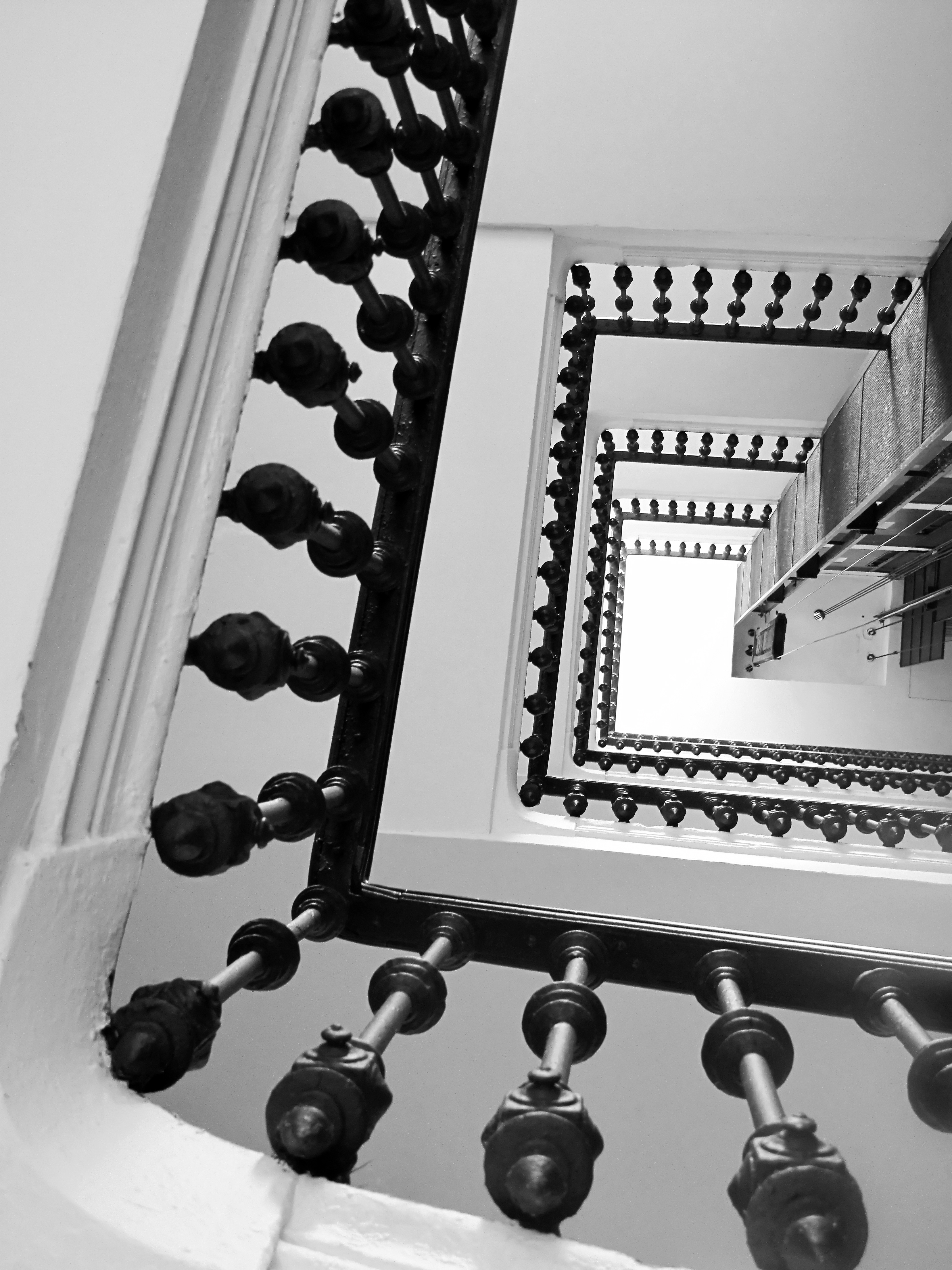Premises Liability Statistics and Numbers
- What Are Premises Accident Statistics?
- Causes of Premises Liability Accidents
- Injuries Present in Premises Liability Lawsuits
- Premises Liability Laws and Negligence
- What To Do To File A Premises Liability Claim
- Value of a Premises Liability Lawsuit
- Premises Liability settlements
- Potential Restitution from a Premises liability Lawsuit
- Premises Liability Statute Of Limitations
What Are Premises Accident Statistics?
In 2015 alone, more than 33,000 individuals died in slip and fall accidents. Falls most often lead to brain injuries and are the highest leading cause of non-fatal injuries. There are just under 250,000 incidents per year (20 to 30% of which lead to injuries), but the actual number is likely much higher than what is reported. Many individuals who get hurt may not go to the doctor to get treated, and even fewer will go to a law firm to seek representation and file a claim.Learn more about your legal options: call (855) 339-8879 to speak with a representative now.
The retail industry is home to 60% of falls, but the majority of deaths happen in the home. Additionally, a quarter of pedestrian accidents occur due to faulty or defective sidewalks. There are over 100 deaths each year thanks to falling trees and tree branches, or landscape-related issues. In legal areas, 1 in 10 lawsuits are related to premises liability. Premises liability victims are paid about $4 billion per year, but only 6% of cases feature punitive damages, which are often large amounts that inflate case value. The median settlement or verdict for premises liability lawsuits is around $45,000, but can reach $90,000. In cases where discs are damaged, herniated, bulging, or similar, the median climbs to $150,000. This is not uncommon, given that spine injuries are often debilitating in many ways.Our Recent Verdicts and Settlements
$500,000
$600,000
$599,000
$420,000
$460,000
$360,000
$300,000
$310,000
Causes of Premises Liability Accidents
There are many rules and regulations that must be adhered to in any place of business or in any home. Even public places have standards and building codes that must be followed. There is also a general rule of safekeeping; if it can be potentially dangerous to others, it should not exist, or there should be an adequate warning for anyone who may come near it. It is shocking that so many different locations can lead to accidents with one mistake or oversight. Some of them include:
Staircases, Steps, Ramps, and Escalators
Any walkway can potentially lead to injuries if it is not properly maintained. Upkeep is important, but some locations do not practice it. Staircases, for example, should not be too small, slippery, or have any holes in them. There should also be banisters and handrails to guide people up and down. Ramps are similar; they should not be too steep or have any cracks that could potentially cause individuals in wheelchairs to get stuck or flip. Escalators and moving sidewalks are automated, but a sudden stop or mechanical failure can throw anyone forward or backward and cause severe injuries.
Potholes, Holes, and Ditches
There should be adequate warning about any holes in the ground that could cause people to get their feet stuck. Others have been riding bicycles and scooters when they fell into holes, leading to accidents. Potholes in the street also can cause broken axles, popped tires, and more. Many times, individuals are not staring at the ground when they are traveling, and if they don’t see the holes, they can easily get hurt.
Falling Trees and Tree Branches
Trees should be properly trimmed so that the branches do not hang too low. Low-hanging branches can carry too much weight and the gravity could cause them to fall, breaking anywhere near the trunk. Trees may also die and become easily moved, and they could fall in storms or rough weather.
Sidewalk Conditions
Sidewalks should be properly maintained by whomever the property owner is. Holes and cracks are only one issue that can arise; property owners should make sure to shovel all snow, salt or melt all ice, and keep the sidewalk free of branches, dirt, gravel, and anything else that can impede the progress of pedestrians or cause them to fall and get hurt.
Carpeting
In businesses and homes, there may be carpeting that has been laid down improperly. The caret could be torn in certain areas from excessive use, mistaken cuts, rolling chairs, animals, and more. It is hard to see sections of torn carpeting if it is flush with the rest, and you can easily snag your foot on the raised section.
Merchandise and Obstacles in Aisles
Companies should not have merchandise, items, obstacles, objects, and other things in the aisles that could make it hard for pedestrians to move. They may lose their balance in trying to go around the items or they may slip on pieces that are sticking out. Stockers and workers should be sure to keep the aisles free for customers. This could also be a fire hazard if there is a large blockage.
Slippery Floors
Business should have signs that indicate when floors are wet or slippery. Spills from refrigerators, beverages, and more can cause tile floor to become slippery. There can also be oil and grease on the floor at a mechanic’s garage or excess materials at factories. It is hard at times for businesses to catch every slippery floor.
Construction Sites
Construction sites are one of the most dangerous areas that you can be near. There are cranes and scaffolds that could have many items on them which can fall at any moment. Workers wear hard hats and protective gear to not get hurt by rocks, lumber, metal, and more. You should always exercise extreme caution when passing by construction areas.
Bed Bugs, Asbestos, and Carbon Monoxide
It is the duty of apartment landlords and hotel or motel owners, among others, to provide safe, sanitary, and clean conditions for any guests. Some owners do not adhere to these rules, though, and never check the rooms or units for issues. Bed bugs may spread from place to place and go unchecked for years, while asbestos could slowly contaminate as well. Carbon monoxide poisoning is dangerous enough that it can kill families overnight. Property owners should be sure to inspect the entire premises to check for toxic gases, vermin, infestations, and more.
Injuries Present in Premises Liability Lawsuits
 Accidents that happen on different premises can lead to myriad injuries. The damages can be minor and require no medical treatment at all, as most are, or they can be major and cause lifelong pain and suffering. Sometimes, the injuries are seemingly disproportionate to the kind of fall. However, some individuals have brittle bones, a predisposition to such damages, are older and more injury-prone, and more. Some of the injuries that you can suffer include:
Accidents that happen on different premises can lead to myriad injuries. The damages can be minor and require no medical treatment at all, as most are, or they can be major and cause lifelong pain and suffering. Sometimes, the injuries are seemingly disproportionate to the kind of fall. However, some individuals have brittle bones, a predisposition to such damages, are older and more injury-prone, and more. Some of the injuries that you can suffer include:
- Concussions
- Traumatic brain injuries
- Closed head injuries
- Internal organ damage
- Lung problems
- Heart trouble
- Neck injuries
- Spinal cord injuries
- Herniated and bulging discs
- Dislocations
- Fractures
- Broken bones
- Sprains
- Strains
- Torn ligaments
- Torn muscles
- Paralysis
- Nerve damage
- Burns
- Electric shocks
- Hip injuries
- ACL, MCL, and LCL damage
- Brain damage
- Puncture wounds
- Foot and ankle injuries
- CRPS
- Lacerations, cuts, bruises, and abrasions
- Hematoma
- Paraplegia
- Quadriplegia
- Coma
- Death
Although some types of accidents lead to more damage than others, you should not try to shrug off injuries after an incident. It is important that you get the help you need.
Premises Liability Laws and Negligence
In order to file a premises liability lawsuit, you should have ample evidence, but you must also be aware of the different laws that you have to follow and what constitutes premises liability in the first place. For one, you have to identify what kind of visitor you were. Invitees are owed the highest duty of care and should not be subjected to any harm at all; they are usually customers or individuals on the property who are exchanging services or are there for a mutual benefit. Licensees are those who are not there for a specific service but are perhaps social guests or solicitors. They are generally expected to abide by the rules of the premises and do not need to be specifically catered to. Lastly, there are trespassers who have no legal right to be on the property. However, just because it is illegal for them to be there, that does not give property owners the right to set traps or cause them harm. For example, if private property extends into a space that is public on both sides and people often cross it for ease and efficiency, the property owner cannot try to cause any harm to the trespassers. In order to file a premises liability claim, the following points can apply. Only one needs to be shown to be true. They are: The property owner caused the issue, whether by installing a defective stove, bringing bed bugs in with secondhand furniture, creating a hole while repairing the sidewalk, and more The property owner knew about the trouble but did not fix it, such as when you repeatedly report an exposed wire to your landlord, when a spill goes unattended despite complaints to the manager in a store, and more The property owner did not know about the problem but reasonably should have if he had been diligent in his duties, which is the most common complaint; it often applies to supervisors who do not send anyone to check on issues, homeowners who ignore their sidewalks, and other situations You can therefore claim that a property owner was negligent if he could have reasonably prevented the incident from happening but did not. Property owners will often try to deflect liability and deny negligent action or inaction; they will claim that visitors should have had the sense to watch where they are going or that the defects were not a factor in causing any other accidents beforehand.
What To Do To File A Premises Liability Claim
To file a premises liability claim, you will need ample evidence to do so. This evidence can take on many forms and can be gathered from many sources. You should take care to gather as much proof as you can at the scene of the incident so that you do not have to worry about anything being changed or fixed. As long as you document the issues in a timely manner, your claim will be more likely to succeed. The very first step you should take is pursuing medical attention. You could call the paramedics or go to the hospital or a healthcare facility for treatment. This is important because it will form the basis for your claim. If you weren’t injured, you won’t be able to file a personal injury lawsuit. The paramedics can treat you at the scene and determine how extensive your injuries are and if you need emergency help. Some people try to forgo medical treatment, which is not wise for your health. It is also detrimental to your claim – if there is no indication that you received or pursued medical help, the insurance agent considering your claim will see a red flag. He will not believe that you were as injured as you said or he will say that you were actually hurt in another incident and you are trying to wrongfully collect compensation. The next course of action is to take photographs of your injuries, the scene of the incident, any involved parties, and more. It is important that you get photos of the premises before the business owner or property owner conceals them or fixes them. He will do all he can to claim that they were not problematic when you were hurt. Your proof can show their actual state. You may also acquire surveillance and security footage from a store camera if possible. There may have been witnesses who saw the accident happen or who were similarly affected. You can interview them and collect their statements and testimonies about what happened, how the defect was present, and more. It is beneficial to have additional perspectives to support your case. In the same vein, there could have been police called, who can file a report that you can add to your evidence package. You should file an incident report with the company if you were injured at a business. This will put the incident on file; you can keep a copy of it to show that they were aware and that no action was taken. It is also important that you gather business details and insurance information. There should be ample documents proving various parts of your case, such as medical receipts, proof of purchases or receipts showing your presence in a store, and more. It is important that you do not throw away anything that can prove your presence in a location. Finally, you should reach out to a lawyer who can handle your premises liability case for you. The attorney will make sure that your evidence is appropriately organized and will send the package to the insurance agent along with a demand letter requesting a certain amount of compensation. Without an attorney representing you, you may not be given any help by the insurance agent; he may simply throw your claim out or ignore it. A lawyer can stay on his case and ensure that your lawsuit is getting the attention it needs. Further, a lawyer can hire expert witnesses to attest to the state of your damages, building codes and regulations, previous incidents, and more. You may not have the energy, knowledge, money, or time to handle a legal claim against a property owner. It is in your best interest to hire an attorney who can take care of the process while you undergo any treatments and recover from your injuries.
Learn more about your options for compensation by calling (855) 339-8879.
Value of a Premises Liability Lawsuit
A premises liability lawsuit can be worth a lot of money in certain circumstances. The primary factor that is used to determine the worth of your lawsuit (which is measured by an insurance agent) is your injuries. The extent of your injuries, such as how debilitating they were, how much of your body they affected, and more, will be taken into consideration, as well as the duration – if your injuries are long-lasting or permanent, you’ll get a higher offer. If your injuries also forced you to take time off work, require accommodations, change jobs, or go on permanent disability, your offer could be increased as well. In addition to your injuries, your age and type of job will be considered. A young person who heals quickly and has not yet settled into a life with family and a career may not be given as much compensation as a working mother, for example, Also, if your injuries do not affect your job, you may not receive that much restitution. A foot injury may not be impactful for someone who is a software coder, but a hand injury could be devastating. Further, the insurance agent will consider if you were responsible in any way for the accident. If you were partially at fault, the agent could seek to decrease your offer. Your level of liability could impact your claim; for example, if you were running in a place that barred it or if you were too overburdened with luggage that you couldn’t safely ascend steps, you may be held partially accountable for the incident. Your claim’s value is something that must be negotiated. Unfortunately, many insurance agents tend to undervalue claims, make tiny offers, and wait to present anything. They do this to protect their profits and save money. A lawyer will be able to negotiate a better deal.
Example Premises Liability Case Results
A common pitfall that many victims of premises liability accidents suffer is that they believe their accidents are worth as much as another person’s. Two cases may be identical or very similar, which could, in the victim’s mind, mean similar compensation. However, the circumstances of each case, even a minute detail like whether or not a step was too high, can be the factor that sends a claim over the million-dollar mark. Each case has a unique set of additional conditions in it that will affect its worth. We have provided sample case results below to show the different verdicts and settlements that have occurred. These cases show how much the victim’s have won or how the defense was declared free of negligence, and do not indicate what the result of your specific claim will be.
Villarreal v. Hospitality Groups
In Diana Villarreal v. Magnolia Hospitality LLC doing business as Holiday Inn Express Hotel & Suites, Corona; Fine Hospitality Group, LLC; and Kirit (Ken) Pansuria, a woman sought recovery after receiving a shock. Villarreal was on vacation with her family, staying at a hotel for a few days. Two days into her trip, she flicked on the light switch in the bathroom and suffered a painful electric shock. She sustained damage to her right hand and arm, and although she was treated an released from the hospital, she complained of lasting pain. It was later diagnosed to be complex regional pain syndrome, or CRPS, and made her grip weak, caused her right upper extremities burn, and forced her to work slower and more meticulously. The hotel had no previous reports of any incidents with the specific bathroom switch, or any light switch causing a shock. It was revealed that the installation of the light switch did not conform to necessary standards; it was not grounded and had not been examined by the hotel after installation. The hotel claimed that there was no reason to examine the light switch, especially given the total lack of incident reports. The defense stated that all inspections of the room had been up to date and reasonable. The hotel did not keep the light switch, which prompted the plaintiff to cite a Willful Suppression of Evidence, wherein the defendant knowingly keeps evidence from the jury or judge. Villarreal agreed to a settlement of $2 million for various expenses. The case did not make it to trial due to the settlement.
Roth v. Skyworks Solutions
In William Roth and Laura Roth v. Skyworks Solutions Inc., a deliveryman was injured while trying to deliver a shipment on wheels. Roth was delivering a shipment of compressed oxygen gas canisters to Skyworks Solutions. The gas canisters each weighed around 200 lbs and were held together by a manifold at the top. They were on a cart with wheels that could be pushed, and as Roth pushed it, the cart got stuck in a crack on the pavement. He used his strength to keep the 1,200 lb shipment from falling over, which could have resulted in the canisters exploding. However, when he tried to save it, he hurt his back. He required numerous surgeries: one for decompression that ultimately failed, another for vertebrectomy and decompression, and a final one to remove the failed hardware from the first, which also included a fusion. In spite of the surgeries, Roth was declared permanently disabled and could not return to work as an inventory coordinator and gas technician. Skyworks Solutions denied that the exterior pavement constituted a dangerous condition, citing the fact that numerous other deliverymen had delivered their shipments without any problems. The company sued Roth’s employer for indemnification. Roth sought nearly $600,000 in economic damages and more in pain and suffering; his wife sought loss of consortium. Prior to going to trial, the two parties settled on a $650,000 amount.
Mercados, Calderon, and Delgado v. California, Costco, Michelin, and Torres
In Lourdes Mercado, Victor Emanuel Mercado, Lourdes M. Mercado, Awilda Calderon, and Mayra Delgado, Heirs at law and Successors in Interest to Victor Manuel Mercado, Sr., Deceased v. The State of California, Department of Transportation; The State of California; Costco Wholesale Corporation; Michelin North America, Inc.; and Hiram Eulalio Torres, a father’s death prompted his family to sue the State of California for a dangerous roadway. Mercado Sr. was driving his truck on the freeway when he was hit head-on by another driver. The other driver suffered a sudden blown tire which cause him to lose control of his vehicle and careen into Mercado Sr. The impact caused Mercado Sr. to swerve, crash through the median barrier on the freeway, get hit by two oncoming vehicles, and incited his gas tank to explode, killing him in the process. The family brought a case against the State of California and Caltrans saying that the accident location was dangerous. The points included the median barrier, which the plaintiffs stated should have been higher, adhered to newer standards, and redirected the truck into regular traffic instead of oncoming; the projects that were abandoned that sought to place larger barriers along the freeway; and more. In response, Caltrans stated that the accident was the result of a vehicle failure and driver negligence, not the condition of the roadway. The defense said there was no legal duty t ensure that trucks are redirected and that the area in question had a lower than average accident rate. Had a newer barrier been placed at the location, the road would have been shut down for some time. Further, the accident reconstruction expert said that there force of the crash was enough that even if Mercado Sr. did not break through the barrier, he would have died regardless. The family sought numerous damages, claiming their closeness as a reason for the various plaintiffs. They requested $1.5 million, but a jury found that the roadway did not constitute a dangerous condition. The case was ruled in favor of the defense.
Mobley v. Irvine Company and Gelson’s Market
In Lynn Mobley v. The Irvine Company, LLC; Gelson’s Market; Irvine Company Retail Properties; and Oak Creek Shopping Center, a woman fell at a store. Mobley tripped and fell at a market, which did not have continuous external surveillance footage. Mobley claimed that she fell and hurt herself because of a height variation in the cement outside the market. This height disparity was in breach of several building codes and was a dangerous condition, according to the plaintiff. Because of the fall, Mobley suffered a fractured elbow and underwent treatment for it. The surveillance footage provided by the defense, though, showed Mobley on the ground, and not actually falling. It did show that she used her arm to push herself up, grab a shopping cart, and dig in her purse. She claimed that very same arm was the one that was injured. The defense claimed that she did not fall in the area where she claimed the height disparity was. Further, the defense stated that she had reported the same fractured elbow some months previous but was not treated for it. The doctors also could not determine the age of the fracture that was eventually repaired. Mobley sought $75,000 for her damages, much of which was based on her claim that she would lose out on ample wages because her job was completely based on commission. Ultimately, she was awarded nothing; the jury declared that the property was adequately maintained and did not present any dangerous condition to the public.
Conclusion
A dangerous condition may not be present all the time, and it may be hard to win a lawsuit against a property owner if the condition had never been a factor in a previous incident. The presence of injuries at that location must have been caused by something wrong with the premises; they must not have merely occurred there. Many victims may believe they are entitled to damages because they were hurt in a specific place without realizing there must have been some kind of negligent action or lack of action involved.
Complete a Free Case Evaluation form or call (855) 339-8879 today.
Potential Restitution from a Premises liability Lawsuit
Victims of premises liability claims should still be aware that they can potentially receive ample restitution for their damages. These damages can range in value and may be awarded by a jury or in a settlement before trial. The victims should not be expected to pay off various expenses if they were not negligent or did not contribute to the accident. Coverage you can receive includes the following:
- Medical bills from the past and future for hospitalization, surgery, ambulatory transportation, anesthesia, medication, physical therapy, rehabilitation, and more
- Lost income from your job from the past and future if you were unable to go to work or needed to go on disability for some time due to recovery or permanent damages
- Property damage if your belongings or personal items were broken, lost, or damaged, which could result in total replacement in some instances
- Pain and suffering damages, which compensate you for emotional trauma, PTSD, anxiety, fear, mental scarring, and more
Further, you can potentially file a wrongful death claim if a loved one or family member died in the incident. This could result in coverage for the funeral and burial plot, wake fees, pre-death medical bills, pre-death pain and suffering of the deceased, loss of expected inheritance and savings or earnings, loss of consortium or relations, and more. As stated above, punitive damages are rare in premises liability claims. They are additional monetary amounts meant to punish the defendant and prevent him from acting the same way in the future. The damages are handed out in times of egregious negligence or when the defendant intends to cause harm. This is not a common situation in premises liability. Further, the damages are often seen as harsh or excessive, so they are difficult to win, and only a qualified lawyer will be able to secure them.
Premises Liability Statute Of Limitations
The statute of limitations is the time during which you can file a lawsuit against the responsible party. If you do not take legal action in this time, you won’t be able to do so in the future an you will be unable to secure compensation. The statute is important because it gives both parties maple time to build their cases and does not allow unjust waiting times or targeting. Therefore, your claim should be handled in a timely manner. The statute of limitations for personal injury claims, and therefore premises liability lawsuits, is 2 years from the date of the injury. This time limit can be extended or lowered in some cases, though. For example, a claim against a government entity must be filed within 6 months of the injury. An extension can occur because of your age (minors cannot sue and must wait until they turn 18 years old), mental or physical state (incapacitated victims can postpone the statute until they return to health), and location of the defendant (if a property owner leaves the state the statute will be suspended until he returns). The time limit to file a claim can be easily confused by victims, especially if they haven’t meticulously logged dates. This is why it is in your best interest to get a lawyer who can ensure that your claim is filed on time within the appropriate window. Waiting too long affects hundreds of thousands of victims and prevents rightful compensation from being awarded. You should not fall into the trap of inactivity; an expert premises liability attorney can ensure that your case is handled quickly and efficiently.
Over $1 BILLION Recovered
for Our Clients
By submitting this form, you agree to receive telephone calls and text messages at anytime, which include hours outside of business hours (8:00 am PST – 9:00 pm PST). This is so that we may reach you as soon as possible in order to consult on your potential case.
Featured Lawyers









